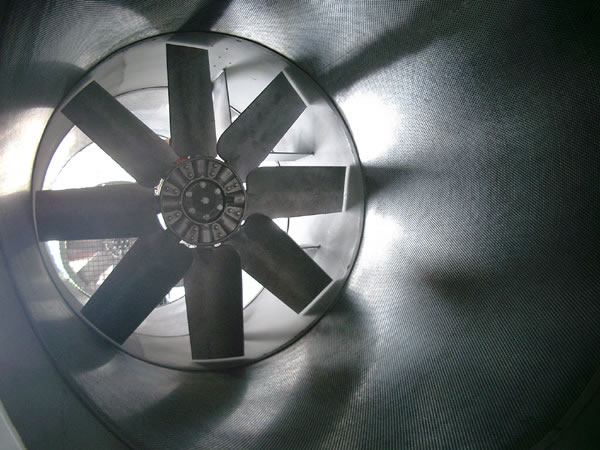The rotating component of a fan is called an impeller, and is arguable the most important part of the fan. The impeller is designed from fluid dynamic specifications such as volume flow and pressure. However the impeller materials are selected for their thermal and chemical specifications. Quality Construction of the impeller is also important to ensure that the impeller holds together under operating conditions. Unbelievable though it seems we have seen impellers held together by tack welds only, unsurprisingly it came to us for a rushed repair (we chose to remake that particular job). MAS will ensure the impeller is correctly welded and can offer for your quality records and peace of mind crack testing in house or by NATA certified personnel if required. The material thickness, selection and specific welding sequence and technique all contribute to prevent distortion and imbalance in the impeller, and contribute greatly to how long it will last.
Casing Construction
As with the impeller consideration should be given to the materials used based on the operating environment. Mild Steel maybe perfectly adequate (and cheap) for most normal environments, however it is not ideal in even mildly caustic, acidic or marine environments. Further more selection of the correct thickness of material will help to reduce noise and vibration from the fan. (Noise is an important consideration in todays’ OH&S conscious workplace.) Correct casing design is important to ensure sufficient rigidity under the expected operating conditions – vibration & bellowing are common results of insufficient stiffness in the casing.
Morse can construct Fans from various grades of Stainless Steel and can also apply various coatings such as galvanizing, or epoxy paints to give added protection in harsh environments. Of course it will add to the upfront cost of the fan but the extended life you get from the fan will repay the investment. After all its not just the cost of the fan, but the cost of a breakdown (repairs, lost production) that should be considered.

